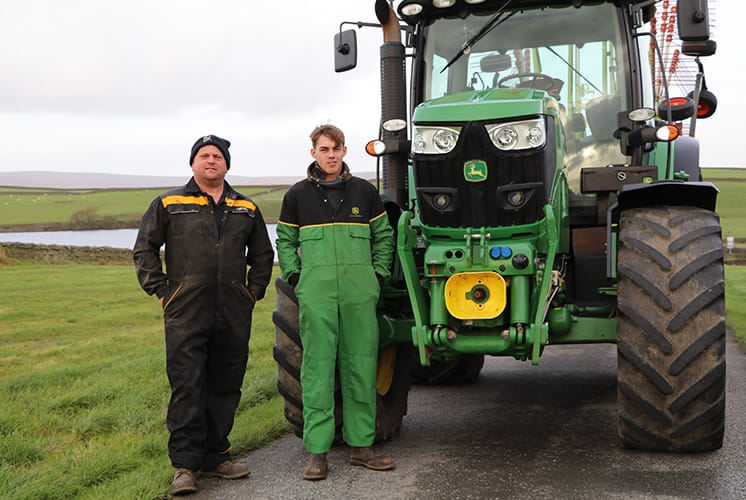Perched 800ft above sea level with some land reaching up to 1,000ft high, a grass harvesting outfit that can beat the breaks in the weather for both his own land and neighbouring contracting customers is essential for Graham Holmes.
To keep up, he runs three John Deere 6150R for all the main works including mowing, raking and hauling silage at Chelker House Farm in Addingham, west Yorkshire, with the trio of tractors between eight and nine years old. The tractors replaced older JD 6920s, which had handled the variety of works well, but Graham felt the need to change and keep the fleet fresh, and, the 6150R models looked like the ideal replacements.
“We don’t buy new tractors due to the cost and we average 300 hours per year on each unit. The shorter wheelbase machines are ideal for us as we have tight lanes and gateways, so even the larger 6R models would be too big. However, all three tractors have had an engine remap as the standard models couldn’t run our front and rear mowers.”
Graham farms in partnership with his parents, and son Sam helps during holidays. The family dairy farm milks 100 cows twice a day using robots and runs a grass contracting operation for local farmers.
Initial power problems
Although the size of the tractors was akin to what Graham ran before, as standard, the machines were significantly underpowered and rated at 136hp. Most notable were the significant output losses when running the twin mowers and hauling silage on the hilly terrain.
“We’ve not long purchased our latest 6150R and this time we’ve added an ECU remap from Avon Tuning HD through our local service engineer, Tom Eckton, and along with carrying out the remap, he provides advice over the phone if we require it. The mowers are the biggest reason for getting the tractors remapped as they are power hungry and cost us a lot of time before-hand.”
Tom is part of Avon Tuning HD’s network of nationwide authorised agents, carrying out performance increases on farm to tractors, telehandlers, combines and foragers. Output with the mowers in a good silage crop was around 7kph, but the biggest problem was when the front mower hit some already cut grass at the end of a row, the tractor just died and had nothing left to give, forcing the operator to lift or slow to crawl. However, since the remap, the output has been impressive.
“We have only increased the tractor power to within the safe limits of the engine and drivetrain, as reliability is still key and we have a lot of investment tied up in these machines, so we want to keep them in top condition. The tractor can now handle the mowers at 15kph comfortably and is able to manage cut grass and keep running to the end of the row even in the thickest crops. It means we can drop more grass per day which the forager can easily clear.”
Remapping benefits
Other jobs handled by the tractors include a 2,300gal slurry tanker, twin- and four-rotor rakes, along with hauling grass – the latter has also been improved since the remap due to some of the steep hills.
The farm run 12t Bailey silage trailers and, in wet, heavy crops, the tractors struggled to keep up with the Claas Jaguar 870 forager, meaning output of the harvester was limited, which slowed down the whole process. “This costs time and money and can lead us to miss valuable weather windows or getting finished on one farm before moving to another,” says Graham.
A big part of running older machinery is maintenance, and we frequently service our tractors and keep the radiators clean. “John Deere tractors are well known for having a pre-screen in front of the radiator which prevents any debris getting through. They are great, but the flip side is it blocks up quickly, especially when mowing, so we regularly clean them to keep the engine running at optimum temperature.”
Even though the business has upgraded the forager recently and now runs a higher output Claas 870 across the 800ha of silage ground, the tractors aren’t using any extra fuel to counteract the increases in work efficiencies. “Any fuel use increase is offset by greater output when mowing and hauling trailers. I also must factor in the wider implications that by running an underpowered tractor, it can slow the forager down, which incurs greater cost.”
Remapping has allowed Graham to run cost-effective tractors in his business and increase the power outputs to match the demand of his implements, and increase work efficiencies not only from the tractors but the wider harvesting process.

